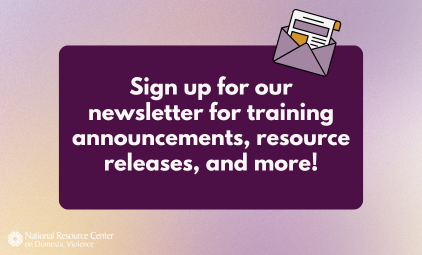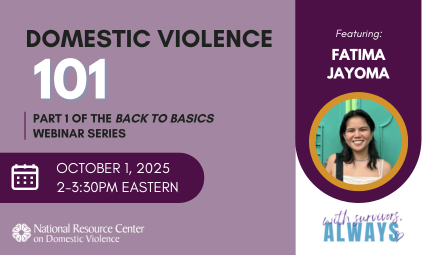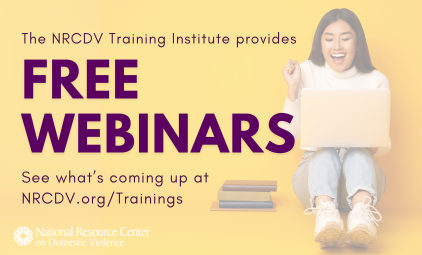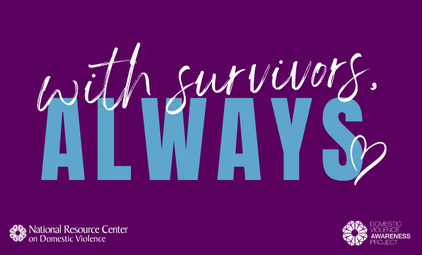By Casey Keene, Director of Prevention for the National Resource Center on Domestic Violence (NRCDV)
When I feel grief, overwhelm, and despair, I seek the water. Sometimes it’s in the form of a simple shower or bath. If I can, I walk to a nearby creek or head to the river or plan a trip to a lake or the ocean. No matter the dose, I find water healing.
I have tried to “be like water” on my journey to resilience – striving to embrace fluidity and flexibility in response to life’s challenges. It’s a difficult practice. Resilience for Advocates through Foundational Training (RAFT) encourages us to consider resilience “not as simply surviving the storm, but thriving while you’re in the middle of that storm” (2024).
Like many advocates, I am feeling the impact of the challenges we are currently facing. It reminds me of a recent visit to the ocean during a hurricane. The power and unpredictability of the wind and water was frightening. I felt weak and small against it, and afraid of the potential scale of its devastation.
Jon Kabat-Zinn, a leader in the study and application of mindfulness, said “You can’t stop the waves, but you can learn to surf.”
Learning to surf is a metaphor for finding balance amidst the chaos. It requires practice and focus, but each of us can cultivate equanimity, or a state of calm and balance, no matter how wild or turbulent the waters. We can learn to surf together, with grace and compassion for ourselves and each other.
Equanimity is a foundation for resilience
For ourselves, our families, and our organizations, the practice of equanimity may provide the strength and health that we need to sustain our work. We can learn to act from a place of grounded intention, instead of reactivity. We can break out of survival mode.
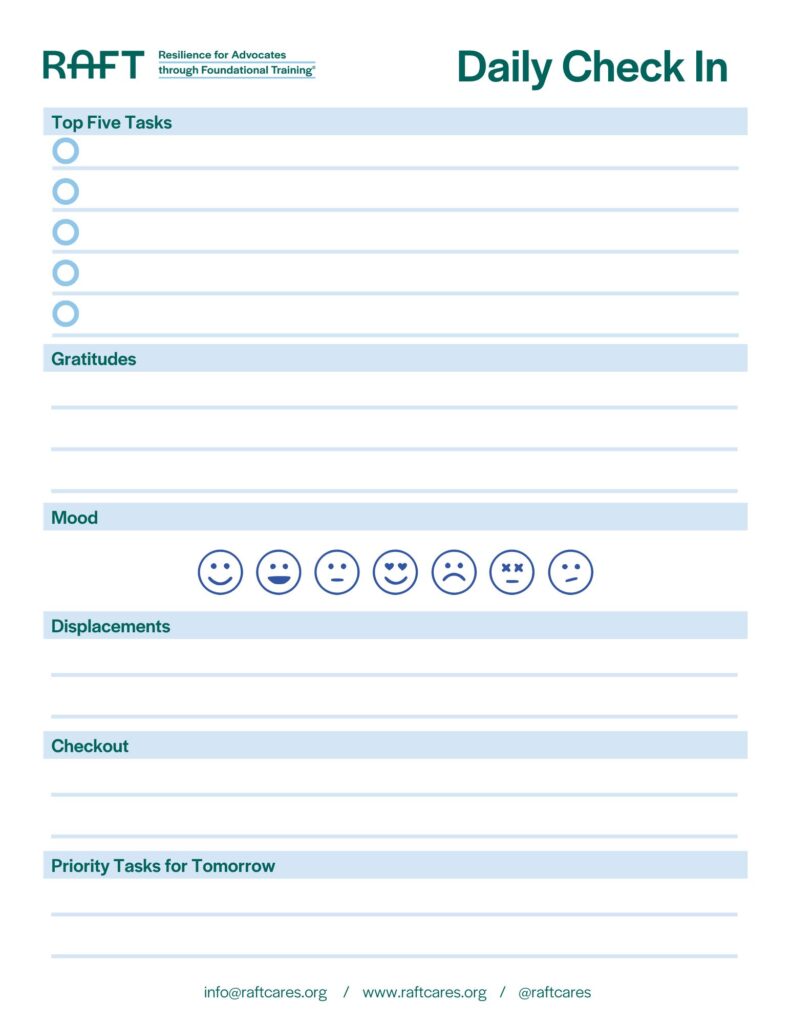 This requires both inward- and outward-facing efforts. The inward work requires us to practice mindfulness, self-compassion, and nonattachment. Mindfulness encourages us to focus our attention on the present moment, acknowledging and lovingly dismissing worries about the past or future. Self-compassion reminds us to accept our own humanity with curiosity and loving kindness. And nonattachment is about recognizing the impermanence of things and avoiding emotional investments in certain outcomes (MasterClass, 2022). We can be like water.
This requires both inward- and outward-facing efforts. The inward work requires us to practice mindfulness, self-compassion, and nonattachment. Mindfulness encourages us to focus our attention on the present moment, acknowledging and lovingly dismissing worries about the past or future. Self-compassion reminds us to accept our own humanity with curiosity and loving kindness. And nonattachment is about recognizing the impermanence of things and avoiding emotional investments in certain outcomes (MasterClass, 2022). We can be like water.
Outwardly, we can cultivate equanimity by building and leaning on connections with others. Not only is connection a basic human need, but it’s also necessary to advance our organizational missions towards social change. During difficult times, connection and community offer essential support. We can focus on improving connection inside our organizations as well as sustaining lasting and meaningful connections in our personal and professional networks. RAFT explains that “having a network of like-minded individuals helps prevent burnout and keeps you focused on the bigger mission” (2025). We can move with greater fluidity, together.
Collaboration will sustain us
When we are under threat, it is easy to retreat into isolation. But we know that connection and community are the remedy. There is great power in relationships. In fact, the prevention community emphasizes collaboration as both the journey and the destination in our work to foster safe and healthy communities:
“In IPV primary prevention a lot of what we have built, knowledge- and practice- wise has come up through relationships. The culture of prevention gets is expression and lives through relationships.” – Cynthia Roberts, RICADV
The National IPV Prevention Council recently conducted a National Prevention Scan to gather information about the nature and reach of prevention programs across the country. 264 respondents offered their experiences with sustainability and growth as we navigate an ever-changing political, cultural, and resource landscape. The data revealed a variety of impactful partnerships that organizations are engaged in to advance domestic violence prevention, most commonly with other violence prevention organizations (70.64%), K-12 schools (53.19%), colleges and universities (51.06%), and youth service organizations (50.64%). It was heartening to learn about meaningful collaborations with partners like libraries, food security organizations, disability rights agencies, parks and recreation, fatherhood organizations, land trusts, job corps, community arts programs, home visitor programs, and transformative justice/abolitionist organizations.
In the development of a new story on collaboration in partnership with NRCDV, CDC’s DELTA Impact recipients reflected on the receptiveness of new partners and their readiness to engage. Kristen Herman of PCADV noted that “people in other fields really do or can see the connections between our work pretty easily.” Recipients emphasized the deep investment they experience from collaborators, and were surprised by how similar all of our challenges are. They noted the willingness of partners to help navigate barriers and challenges when our visions and goals align, being impressed by the strength and power of the collective solutions that emerged in collaborative spaces.
Sustainable partnerships built through mutual care, respect, and reciprocity can offer support in navigating hardship and create lasting impact. In partnership with others, we are greater than the sum of our parts. We can leverage our collective capacity – our shared strengths, resources, knowledge, and skills – to create actionable change. There are many who are living through uncertainty alongside us, and we can reach out, clasp hands, and weather any storm together.
There is always a choice
In the midst of a storm, when things feel out of control, it can be especially hard to see the choices we have. When much feels uncertain, we can ground ourselves in the certainty of our own values. We can develop and use our core values as a guide for our decision making.
In their recent webinar on Managing the Impacts of Moral Injury, Dr. Johnanna Ganz describes the risk and action planning we can engage in as challenges come our way in this work. “You are never stuck. There is always a choice,” they say. “It’s about deciding your values-based action on what you can and cannot accept.”
And when moral injury happens, Dr. Ganz reminds us that we must turn to others: “We need to heal in the context of community and connections with others. We cannot repair or prevent moral injury in isolation. We need other people to be part of the journey” (2025).
Together we can learn to surf.
Forthcoming Resources:
- The National IPV Prevention Council will be sharing findings from the National Prevention Scan in the days and months to come, which focus on sustainability through creative partnerships and funding strategies.
- NRCDV will release a new story featuring lessons learned from DELTA Impact recipients around collaboration, titled Collaboration Works to Prevent Domestic Violence: It is the journey and the destination.
For updates, be sure to subscribe to the PreventIPV Newsletter.
Additional Reading:
- Ten Strategies to Enhance Employee Resilience and Engagement Within Survivor-Serving Organizations by Futures Without Violence
- Stop Trying to Calm The Storm, and Learn to Surf the Waves by Benny Glick for Medium (2017)











